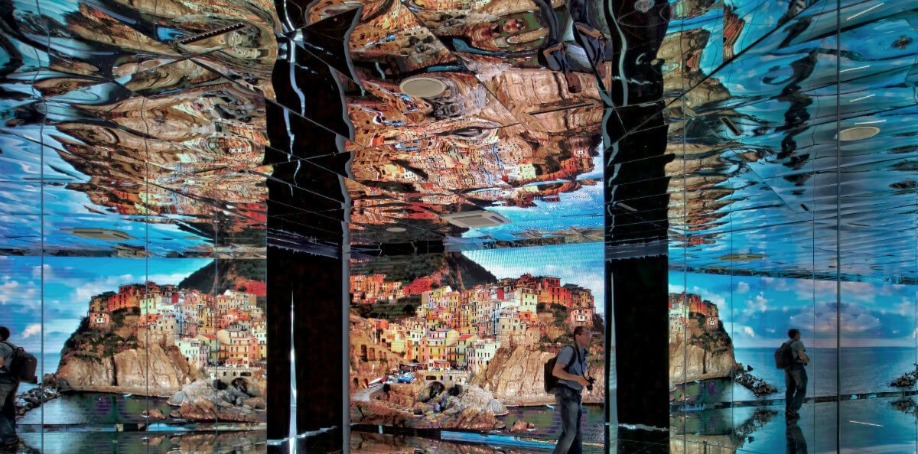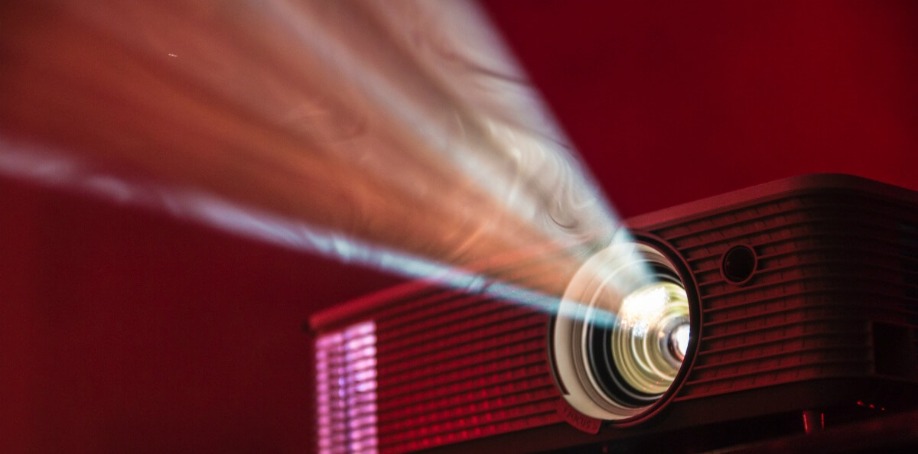
Projection mapping is everywhere from the Sydney Opera House to many cities' museums.
But don't be fooled: Even though the technology is so prevalent, planning and executing a projection mapping event is not easy. A lot of work goes into creating a spectacle that amazes even the most visually overloaded viewers.
Further effort and creativity are required when resources are tight. Getting the most bang for your buck isn't easy. But if you follow the guidance below, you can maximize the impact of your projection mapping and make sure your project goes according to plan.
Start by Mapping Out Your Ideas, Expectations and Resources
Every successful projection mapping project starts with a clear plan and a solid budget. In some cases, projections will be led by the budget. In others, the budget will be led by the projection.
Either way, it is crucial that integrators and clients are in clear agreement on what they want to achieve with their projection, what they want to project, where they want to project it, and what financial and physical resources they have available.
Working out a budget is difficult if you aren't varying considerably in terms of scale and complexity.
If you aren't clear on what you want to achieve, start by thinking about whether you want a 2D or 3D projection.
3D projection mapping, where images are mapped onto physical 3D shapes, is almost always the first choice. It creates the most impact, but it is also the most expensive. That's because it is the most complex option, says Encore Event Technologies. “While still drawing on multiple projectors and Edge Blending, it adds the seriously mind-bending task of mapping images onto actual three dimensional objects.”
2D projection mapping doesn't mean you have to lose the 3D effect, however. Barco's Scott Stremple explains that projection mapping can be used to turn any smooth surface into a 3D show. Pro sports teams like the Philadelphia 76ers and the Las Vegas Golden Knights do this on their home court and home ice, respectively. Stremple notes the technique can be applied to almost any industry, from retail to hospitality.
Once you are clear on the vision, you can plan the budget accordingly. Dominion Print recommends keeping three questions in mind when coming up with your budget:
- What is the size of the projection area?
- What images will be projected?
- When is the event?
The larger the area, the more projectors will be needed. The more complex the projection, the longer it will take to create. The closer the event is, the less time is available to find cost-effective solutions. All of these can contribute to larger costs.

Assess Your Surface and the Surrounding Areas
The location of the project is as important as the projection. Once you have an idea of what you want to create, evaluating prospective venues is essential.
That's because not every venue can accommodate a projection mapping event, says bluemedia's Paul Whitney. Take the surfaces available, for instance. All-glass buildings are unusable unless every pane is covered in vinyl. Lighting also needs to be considered. Whitney calls ambient lighting the “enemy of projection mapping technology.” He recommends scheduling projections for times when any kind of lighting, natural or man-made, won't interfere.
It is equally important to consider the surrounding area, says Christie's Roy Anthony. Where will the audience stand, for example? Nothing should come between the audience's view and the projection — even the audience themselves.
That's not to say you need a huge arena for projection mapping. The EXHIB-IT! Marketing Blog notes that projections can work well in small spaces. However, it is important to remember there will need to be a certain distance between the projector and the object in order to avoid distortion.
Select the Right Equipment for the Job
Great projection mapping events rely on high-quality tech. The better your equipment, the better your projection is going to be. That means it's vital you choose the right equipment for your particular projection — or revise your projection design based on the equipment you have.
Let's start with projectors. There are two types that most AV integrators will choose between: LCD and DLP. While largely similar, the two projectors work in different ways. LCD projectors allow light to pass through LCD light panels, which block out certain colors and allow others to be projected. DLP projectors work by reflecting light off a mirror and through a color wheel.
As a result, the image quality is noticeably different, notes Ingram Micro. DLP projectors display much darker blacks than LCD projectors and are much brighter, too. This makes them particularly suitable for projection mapping projects. You pay for the better image quality, however. LCD projectors are often cheaper, delivering higher lumen output at lower energy consumption.
It's no good having a high-quality projector if you don't have an image that is going to look great on your surface, however. That's where warping and blending technologies come in. There are two options to choose between: software blending, where the blend is achieved on separate PC servers, and hardware blending, where the blend is built into the projector.
Epson's Danny Firpo notes that the choice ultimately comes down to the projection surface. “Hardware blending works best in projections utilizing a single plane or fixed curvature surfaces. A software blending solution works best with complex blends where the surface does not have a fixed plane or fixed angle curvature. In this situation, pixel distortion is less of a factor, as the image is already being distorted by the surface itself.”

Make the Most of a Tight Budget
A bigger budget can often buy a better show. But that doesn't mean tight budgets can't create showstopping projections. There are a number of tactics that savvy companies and AV integrators can use to maximize results on the smallest of shoestring budgets.
If you are under a strict budget, you should stick to 2D projections, writes Team Seefried Group. In particular, focus projections on select areas such as those that receive the most traffic. “An entrance hall flooded in starlight or a bathroom in the middle of the jungle will not only surprise your guests but is also far cheaper than the full room projection of a large event space.”
The size of the projection area also affects pricing, says Event Manager Blog's Christina R. Green. So does the complexity of the building or space. The more intricate the facade, the more projectors will be required, and the more complicated the design will become. Those with smaller budgets should stick to simpler, smaller areas in order to maximize impact and value for money.
Keeping the graphics simple is another way to reduce costs, notes Brandt Krueger, owner of Event Technology Consulting. Developing content is one of the biggest expenses. But that doesn't mean your projection has to be any less impactful. Subtlety is underrated, Krueger says. Swapping flashy animations for low-key textures and graphics can be an effective cost-saving measure.
If you plan on hiring an AV company, consultations with that vendor will be key to successful projection mapping on a tight budget, says Kristen Cooper at Endless Events. “They will be able to advise what is within the realm of possibility in terms of the types and scale of projection so you can ensure you achieve the best bang for your buck.”
That's not to say that you should take one AV company's word as gospel, however. It's important to be realistic with your expectations, but it's also important to choose the right AV company, says Ultimate Experience. A good AV provider should be able to customize their services to your budget and be clear about what you can and can't afford. If in doubt, shop around until you find a provider you trust to deliver what you want for your budget.
Creating an awesome projection mapping spectacle is possible, regardless of the budget. Just make sure you're clear on what you want to achieve, assess your venue thoroughly and choose the most appropriate equipment possible.
Images by: Ricardo Gomez Angel, Lance Anderson, Alex Litvin


